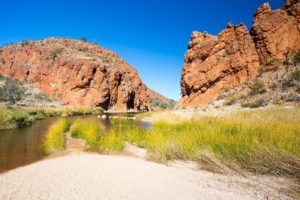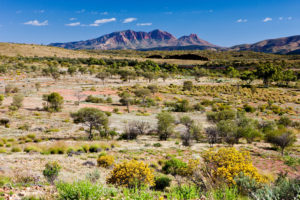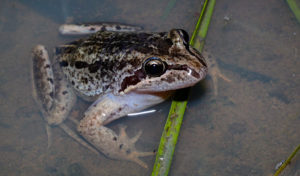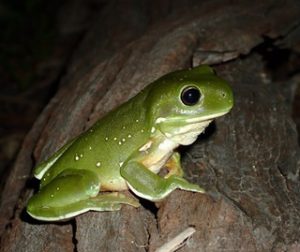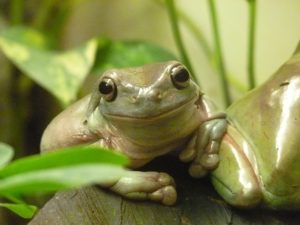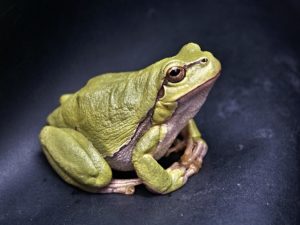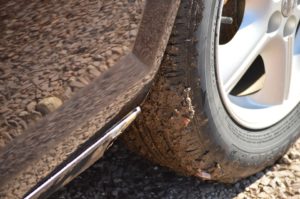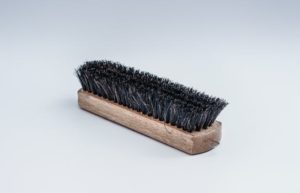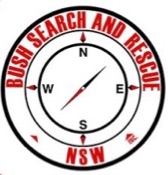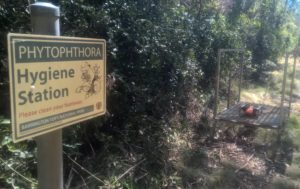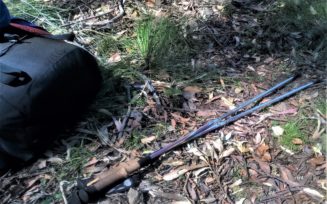Have you ever noticed an overgrown trail or track in your favourite National Park?
Ever wondered if you could do something about it?
The Sutherland Bushwalking Club is one of the clubs that has, and they continue to do so.
The Sutherland Bushwalking Club may be unique, having proudly contributed almost 600 hours of combined effort on various track projects, on over 12 separate work & planning days in what they have dubbed their ‘Adopt a Track’ project.
The Club’s success is a demonstration of what a Club does for its community, and an example of how a Bushwalking Club and the National Parks and Wildlife Services (NPWS) can work together to make parks available to all bushwalkers into the future.
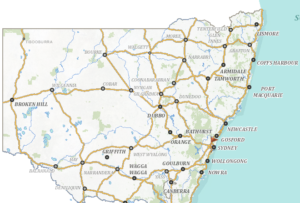
Click to see the Royal National Park on Google Maps
The Club focused on the Royal National Park and initiated talks with the local ranger. Naturally, the agreement required lengthy negotiations with NPWS to meet government regulations and still be effectively managed.
It was eventually worked out that Sutherland Bushwalkers would ‘adopt’ The Burgh Track in the Royal National Park and help maintain it. At the time, the Burgh Track had become badly overgrown, blocked at many points by fallen trees and subject to erosion because of blocked drainage.
There were certain stipulations involved: NPWS determined which track and which part of that track; and a Group Co-ordinator was required to discuss with the Head Ranger track guidelines, cut heights, being responsible for walkers staying on the track and reducing trip hazards. There were also a non-members attending from Bushcare Australia, as well as youths from the Duke of Edinburgh Program.
NPWS supplied most of the tools, such as saws, secateurs, loppers and clippers.
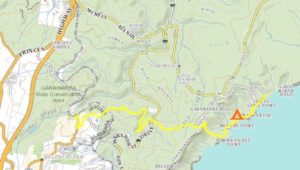
Click for larger image of the Burgh Track
The Club provided their unbridled enthusiasm and experience, expert bushwalking gear, tender loving care and muscle power.
The first day was 10 August 2015 with several members meeting at Garrawarra Farm. Armed with tools mostly supplied by National Parks and Wildlife Services, the Club members walked the track and cleared it as they walked.
Since then, the track has now been fully cleared and looks like the best maintained track in the Park. The hardest work has been clearing fallen trees, but now only sporadic visits, checking culverts and looking out for storm damage are needed to monitor its condition.
The Club continues helping to this day, and more recently NPWS have requested they work regularly on the Uloola Track, between Audley & Uloola Falls every three months; which they access by driving down a fire trail.
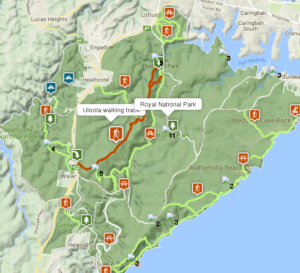
The Club’s ‘Adopt a Track’ project now consists of a one day event every three months, from 9am to 12:30 and then finishes up with lunch in the bush. The event is run by a passionate leader who loves the park, and is a great way for Club members to meet and get to know one another, including new members. Those less experienced or mobile lend a hand with other tasks such as lopping smaller branches, cleaning track signage or even supplying a little something for morning tea.
If you’d like to join in the fun, contact The Sutherland Bushwalking Club via their website: http://www.sutherlandbushwalkers.org.au/
You can also head out and enjoy these great walks for yourself:
Sutherland Bushwalking Club is not alone in assisting NPWS and Councils with track maintenance. If your own club also does track maintenance, we’d love to hear from you. Just click here to send us an email.
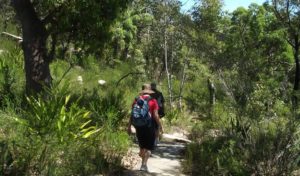
Visit The Royal National Park


